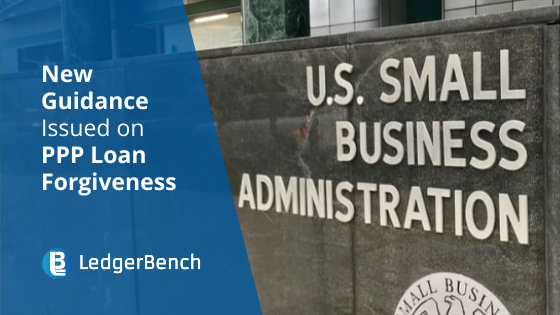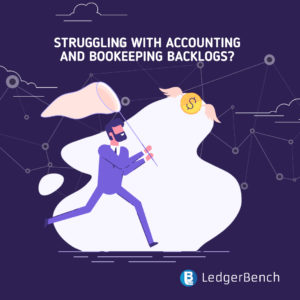
New Guidance Issued on PPP Loan Forgiveness
On June 16, 2020, The Small Business Administration (SBA), released new loan forgiveness application forms and corresponding instructions for borrowers seeking forgiveness of their Paycheck Protection Program (PPP) loans.They also unveiled a new EZ form for forgiveness of PPP loans.
On June 17,2020, SBA also released a new interim final rule #19 providing updated guidance on the use of PPP loan proceeds and loan forgiveness. These updated materials implement and clarify aspects of the recently enacted Paycheck Protection Program Flexibility Act (PPPFA) which changed several aspects of PPP loan and the calculation of loan forgiveness.
The new guidance issued on PPP loan forgiveness and interim final rule #19 are provided below:
Key Takeaways:
- Guidance issued on PPP loan forgiveness continues to be inconsistent. The new loan forgiveness application forms use a calculation that would exclude interest from the calculation of loan amount to be forgiven.
- Previously SBA had rolled out the “Alternative Payroll Covered Period” for the convenience of borrowers but the concept has been extended for borrowers who use the new 24 week covered period. However, this is available only for borrowers whose regular payroll cycle is biweekly or more frequent.
- Eligible amounts paid during the covered period but incurred earlier, can be included in the loan forgiveness amount. The language that created uncertainty in this point has been revised accordingly.
- The per employee limit or cash compensation eligible for loan forgiveness is adjusted for borrowers using the 24 week covered period, from $15385 ( 8 week covered period) to $46154 (24 week covered period) However, the compensation for business owners using a covered period of 24 weeks are subject to lower limit of $20833 across all of their businesses.
- Borrowers who qualify for the newly – release EZ form of PPP loan application do not require to submit full detailed information of their employee and cash compensation and hours worked however, borrowers who are not eligible to use the EZ form are required to provide detailed information of every employee.
- The PPPFA safe harbor for employers who were unable to operate their businesses at the same level of activity as before February 15, 2020 refers to only guidance or requirements from CDC, OSHA or HHS. It does not include guidance or restrictions issued by state, city, county or other local authorities.
Also Read – Tax Calendar 2020 for Individuals
Overview:
Prior to June 5, 2020 PPPFA allowed borrowers to obtain PPP loans to elect a 24 week covered period instead of the original 8 week covered period for PPP loan forgiveness. But this extended period has other consequences such as extending the period in which certain use restrictions apply to the PPP loan and extending the measurement period for headcount , wage reductions and salary. But after June 5, 2020 borrowers obtained PPP loans must use a 24 week covered period. These changes were partially intended by SBA’s interim rule #17 but the latest guidance provides additional clarification.
The new guidance issued on PPP loan forgiveness reflects changes to PPP loans authorized by PPPFA, which includes reduction in the percentage of PPP loan proceeds that must be used for payroll costs from 60% from 75% and the new safe harbours of PPP borrowers who are unable to restore or rehire the wage or salary of an employee or resume their pre-February 15, 2020 level of business activity they had before Covid-19 pandemic due to compliance with health and safety guidelines for slowing the spread of the virus.
SBA has also included the new EZ form and corresponding instructions that simplify and streamline the process of applying for loan forgiveness for certain borrowers that qualify to use the EZ form.
Also Read – A Beginners Guide To General Ledger
New Interim Final Rule Published:
The CARES Act indicated PPP loan proceeds had to be spent on specific eligible expenses to qualify for loan forgiveness. This includes payroll costs, payment of covered rent obligations, payment of interest on covered mortgage obligations and covered utility payments. The new loan forgiveness interim final rule #19 by SBA are:
- Amounts incurred or paid during the covered period are qualified to be included. The language that created uncertainty in this point has been revised accordingly.
- The SBA issued rules for determining payroll costs and owner compensation in calculating PPP loan forgiveness under the new 24 week covered period.
- The PPP act tripled the duration during which PPP recipients could spend the fund and still be eligible for loan forgiveness. This span of time is called the covered period.
- The interim rule #19 adjusts and adds to previous guidance for calculating loan forgiveness under the original 8 week covered period.
- The new interim rule establishes a 24 week covered period for full loan forgiveness at $46154 per individual.
Application highlights:
- Health insurance costs for S corporation owners are not included when calculating payroll costs however, retirement costs for S corporation is eligible for payroll costs.
- Borrowers that received a loan before June 5, 2020 can choose between 8 week or 24 week covered periods.
- Borrowers don’t have to wait till Dec. 31 to apply for forgiveness to use the safe harbour. This is a relief for the borrowers who may be required to reduce the salaries and wages, they can restore before applying for loan forgiveness.
New EZ application details:
The EZ form requires fewer calculations and less documentation than the full application. The EZ application can be used by borrowers that:
- Are self-employed and have no employees
- The borrowers who did not reduce the wages or salaries of their employees by more than 25% and also did not reduce the number of working hours
- Experienced reductions in business activity levels due to health derivative related to COVID-19
Other Provisions:
- All the loans made on or after June 5, 2020 the minimum term for PPP loan is raised to five years. For loans made before 5th June 2020, the two year minimum maturity remains in effect unless both the lender and the borrower agrees to extend it to five years.
- The application deadline to PPP loans remains to be 30th June.
- The proportion of PPP loan that must be used on payroll costs to be eligible for forgiveness drops to 60% from 75%


